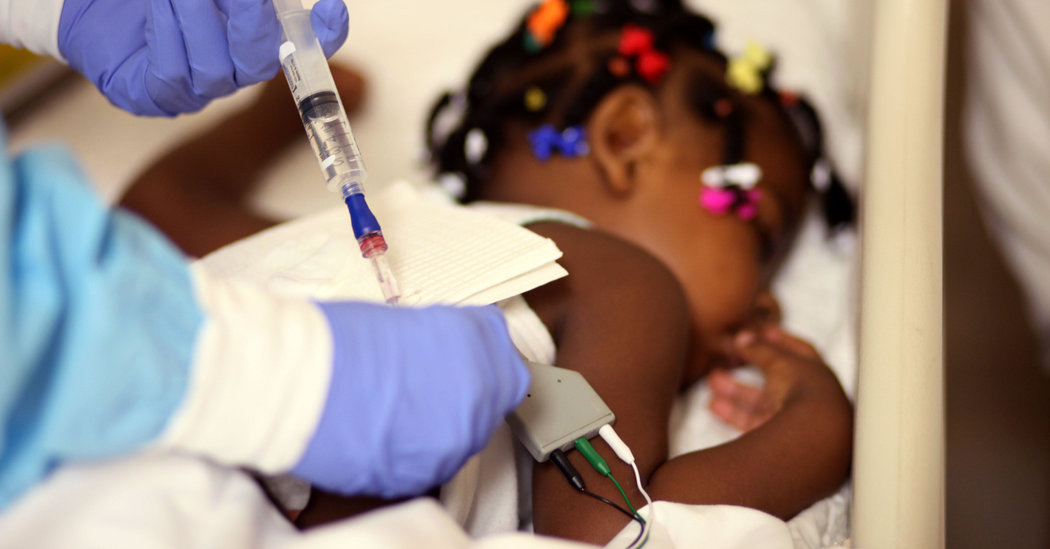
A critical drug that serves as the backbone of treatment for most childhood cancers, including leukemias, lymphomas and brain tumors, has become increasingly scarce, and doctors are warning that they may soon be forced to consider rationing doses.
Persistent shortages of certain drugs and medical supplies have plagued the United States for years, but physicians say the loss of this medication, vincristine, is uniquely problematic, as there is no appropriate substitute.
“This is truly a nightmare situation,” said Dr. Yoram Unguru, a pediatric oncologist at the Herman and Walter Samuelson Children’s Hospital at Sinai in Baltimore. “Vincristine is our water. It’s our bread and butter. I can’t think of a disease in childhood cancer that doesn’t use vincristine.”
Shortages of the chemotherapy drug, which is on back order, will likely affect children throughout the country, he said, obligating physicians to make difficult decisions.
“There is no substitution for vincristine that can be recommended,” Dr. Unguru said. “You either have to skip a dose or give a lower dose — or beg, borrow or plead.”
Vincristine is one of the drugs used to manage acute lymphoblastic leukemia, the most common childhood cancer. Vincristine is also an important agent in the treatment of Wilms tumor, a rare kidney cancer that mostly affects children.
The Children’s Oncology Group, a collaboration of researchers at hospitals and cancer centers, has made recommendations for altering clinical trial treatment protocols involving vincristine, including checking the hospital pharmacy’s supply before trial enrollment; considering using half the dose if the full amount is not available; skipping doses during the maintenance phase of treatment; or in some cases omitting the drug altogether.
“We are all devastated,” said Dr. Michael Link, a pediatric oncologist at the Stanford University School of Medicine and a former president of the American Society of Clinical Oncology.
[Like the Science Times page on Facebook. | Sign up for the Science Times newsletter.]
Without vincristine, many children with acute lymphoblastic leukemia will still be cured, “but this is a difficult disease to treat in general, and with one hand tied behind your back, it makes it much more difficult,” Dr. Link said.
Until earlier this year, there were two suppliers of vincristine: Pfizer and Teva Pharmaceutical Industries. In July, Teva made a “business decision to discontinue the drug,” according to the Food and Drug Administration.
Since then, Pfizer has been the sole supplier, and the company lately has experienced manufacturing troubles.
“Pfizer has experienced a delay, and we are working closely with them and exploring all options to make sure this critical cancer drug is available for the patients who need it,” the F.D.A. said in a brief statement.
Jessica Smith, a spokeswoman for Pfizer, said the company would expedite additional shipments of the drug over the next few weeks to “support three to four times our typical production output,” in an effort to make up for Teva’s withdrawal from the market.
Teva did not return numerous calls for comment.
The American Society of Health-System Pharmacists tracks more than 200 medications in short supply, among them everyday necessities like antibiotics, dextrose and several vaccines, including the rabies vaccine.
The shortages tend disproportionately to involve older, generic injectable drugs, which are difficult to manufacture but command low prices, a combination that often leads manufacturers to get out of the business of making them.
Those withdrawals may leave just one or two companies continuing to supply the drugs in the United States. Their factories must run at peak production to turn a profit and provide a sufficient supply, but the moment there is a quality problem and production shuts down, shortages follow.
Generic drugs play a vital role in the treatment of cancer. Of the 19,000 American children and adolescents younger than 19 who develop cancer every year, 85 percent are cured. But treatment hinges largely on inexpensive, older drugs like vincristine, which have been off patent for decades.
Shortages cause disruption in treatment. According to a survey published in the New England Journal of Medicine in 2013, 83 percent of oncologists said that they were unable to prescribe the chemotherapy agent they wanted to use because of a shortage, and that they had to substitute a different drug or delay treatment.
Dr. Unguru said the survival rate for acute lymphoblastic leukemia, which accounts for nearly one-quarter of all cancers in children, is nearly 90 percent. But eight of the 10 drugs most commonly used to treat it have been unavailable at times over the past decade.
A drug shortages task force established in 2018 by the former F.D.A. Commissioner Scott Gottlieb is supposed to submit a report with findings and recommendations to Congress by the end of the year.
“This shouldn’t be happening in the United States,” said Dr. Peter Adamson, chair of the Children’s Oncology Group.
“It’s hard enough for any family having a kid with cancer, and having a child with cancer likely to be cured except we can’t give them the drug is beyond the imagination. How can we do that to families?”

